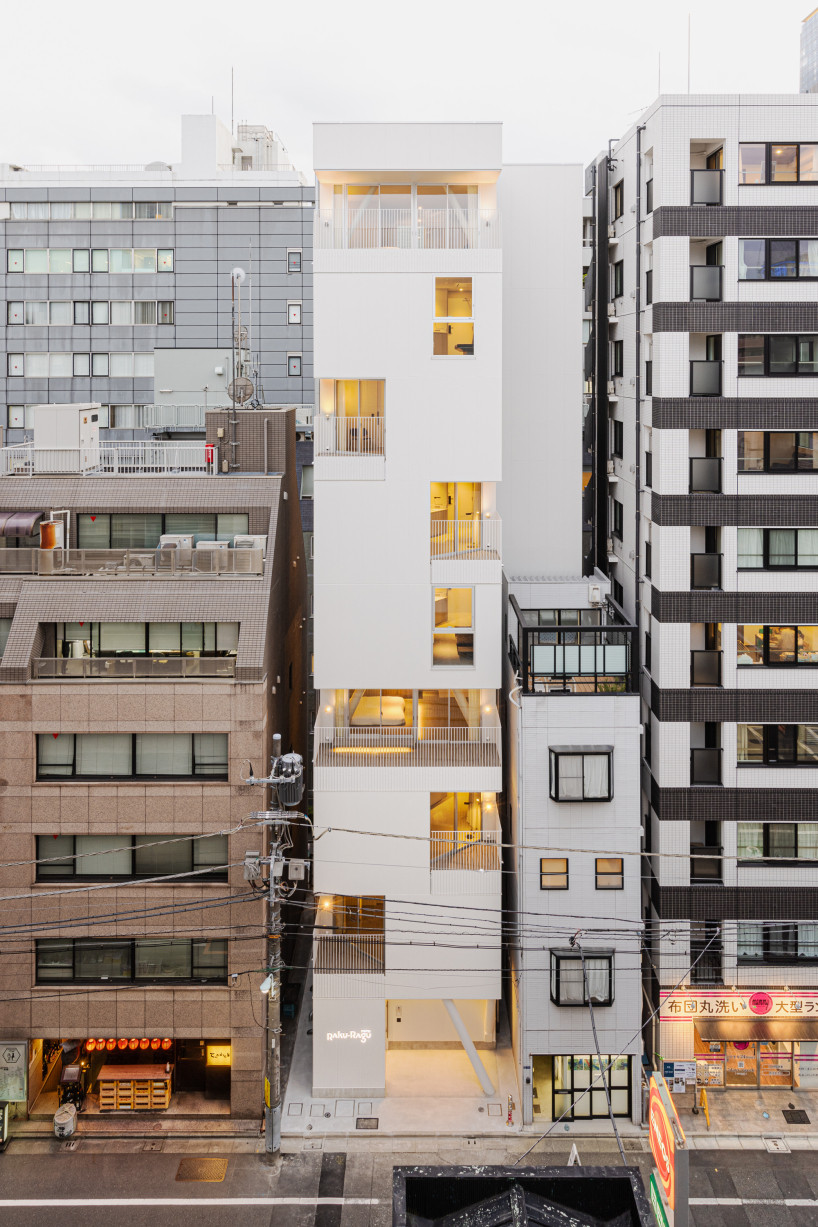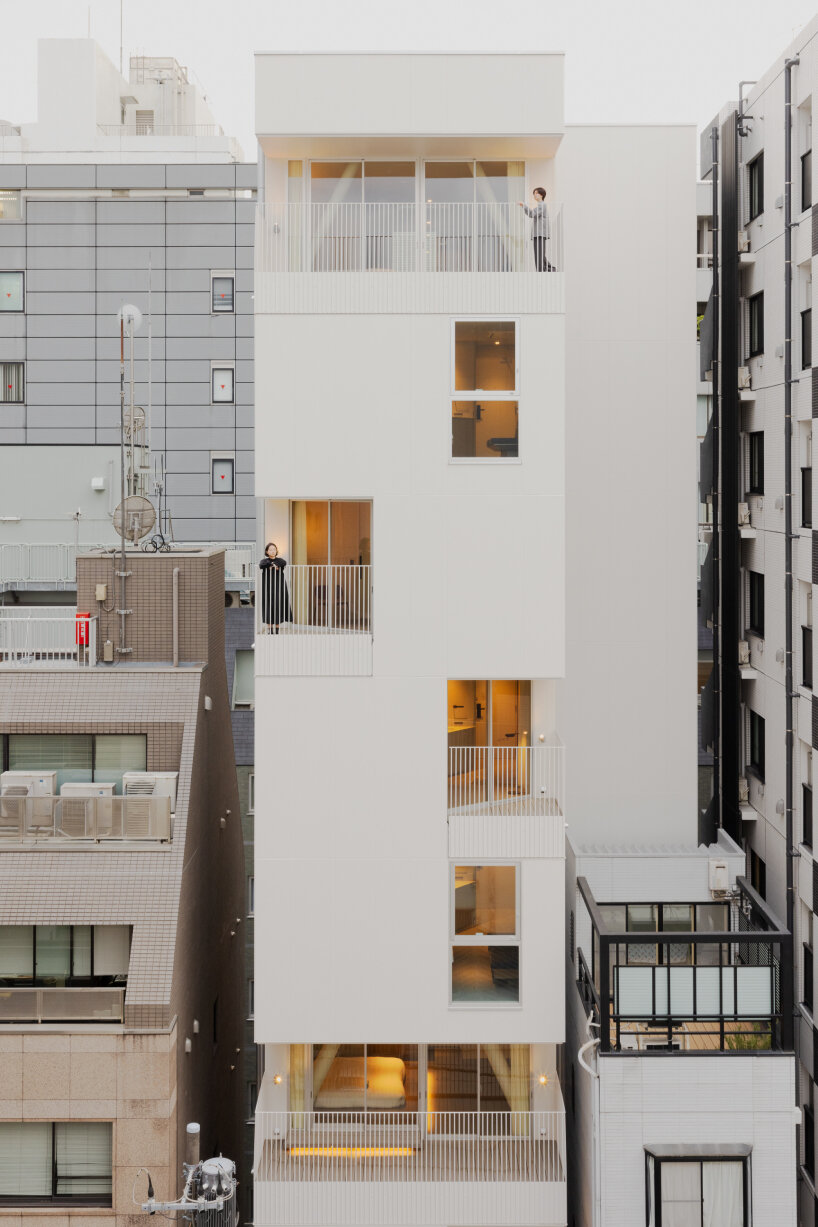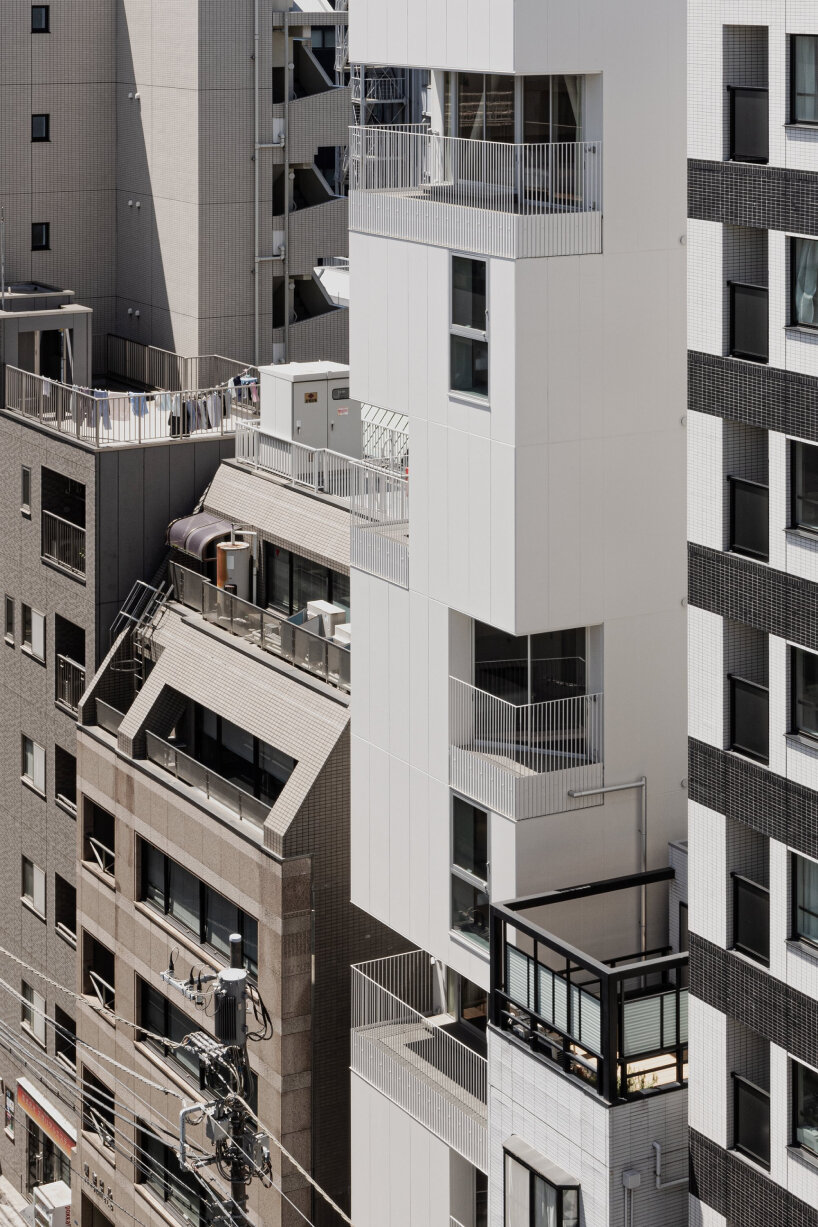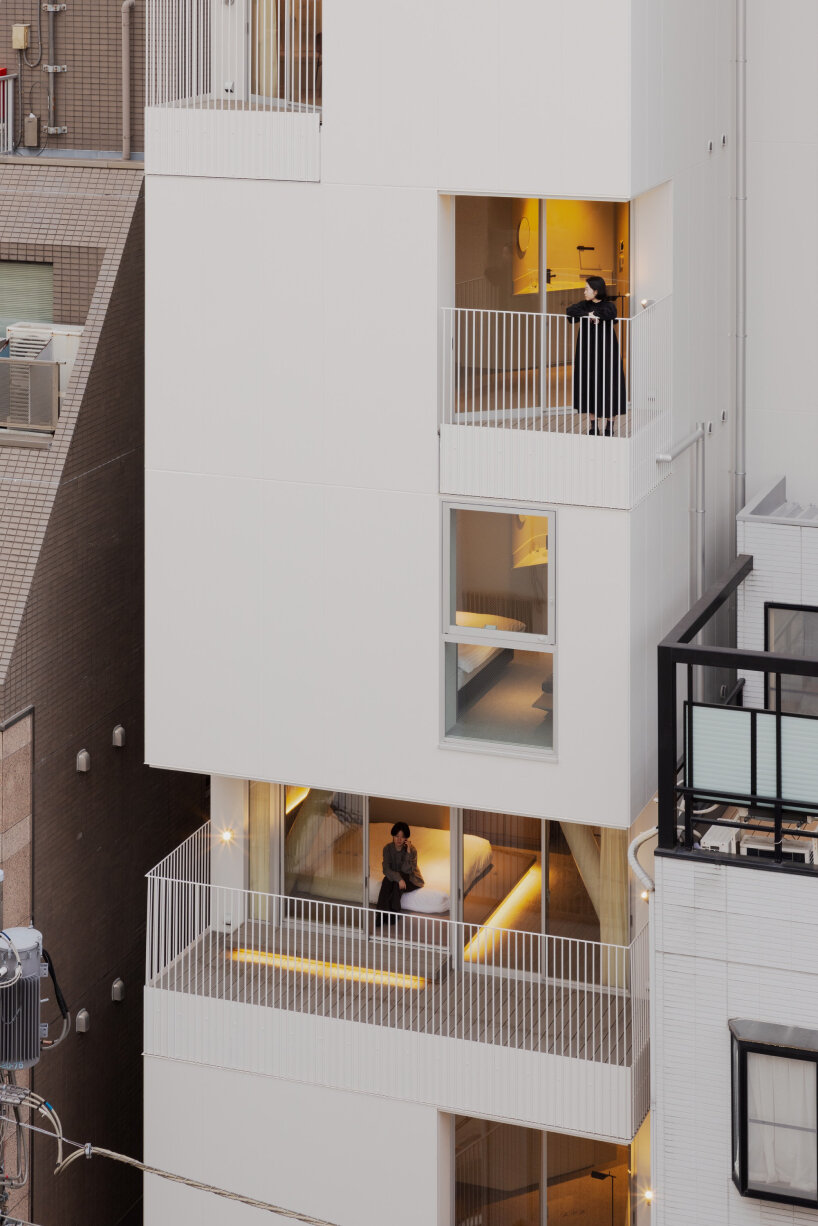kooo architects completes hotel rakuragu
A nine-story building built on a narrow site of 84 square meters, Kooo Architects’ Hotel Rakuragu takes constraints in a positive light and sublimates them into design. Located in Tokyo’s central district, the hotel focuses on the ‘gaps’ within the urban fabric to maximize natural ventilation, light, and diverse urban views within the dense cityscape through a rhythmic geometric facade punctuated by cut-out terraces.
These irregular voids in the white cuboid lend each room a balcony with a unique view, with integrated passive design principles to balance openness with thermal comfort. This decision mitigates summer heat and improves winter heating efficiency — a critical consideration during the Covid-19 pandemic design phase.

all images courtesy of Kooo Architects
the geometric volume is defined by cut-out terraces
Surrounded by mixed-use buildings of varying heights, materials, and styles, the site lacked scenic vistas or uniformity in its urban context. While typical Tokyo hotels omit balconies to maximize interior room space, Kooo Architects took a different approach, observing the surrounding buildings and orienting each floor’s openings toward urban gaps, creating balconies in varying directions. Wrapping around Hotel Rakuragu, some balconies are triangular, while others span the entire bay. To achieve this, the Japanese studio used a steel frame structure with diagonal braces instead of the traditional column-and-beam system. This approach enabled to the columns to be arranged more flexibly and minimized visual obstructions.
Stepping inside, the guest rooms prioritize comfort with curved walls and diatomaceous earth wallpaper, which diffuse soft, natural light while enhancing psychological well-being. Bathrooms are positioned away from openings for privacy, a crucial factor in the densely built Chuo Ward area. The washbasins, meanwhile, are relocated outside the bathrooms, reducing spatial confinement while maintaining functionality

Kooo Architects’ Hotel Rakuragu takes constraints in a positive light and sublimates them into design

a rhythmic geometric facade punctuated by cut-out terraces

located in Tokyo’s central district